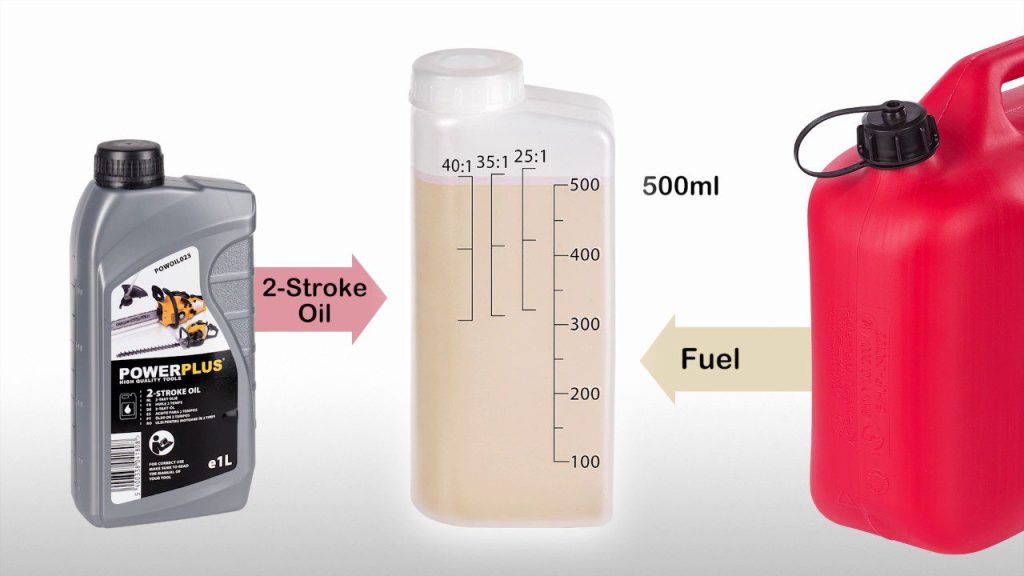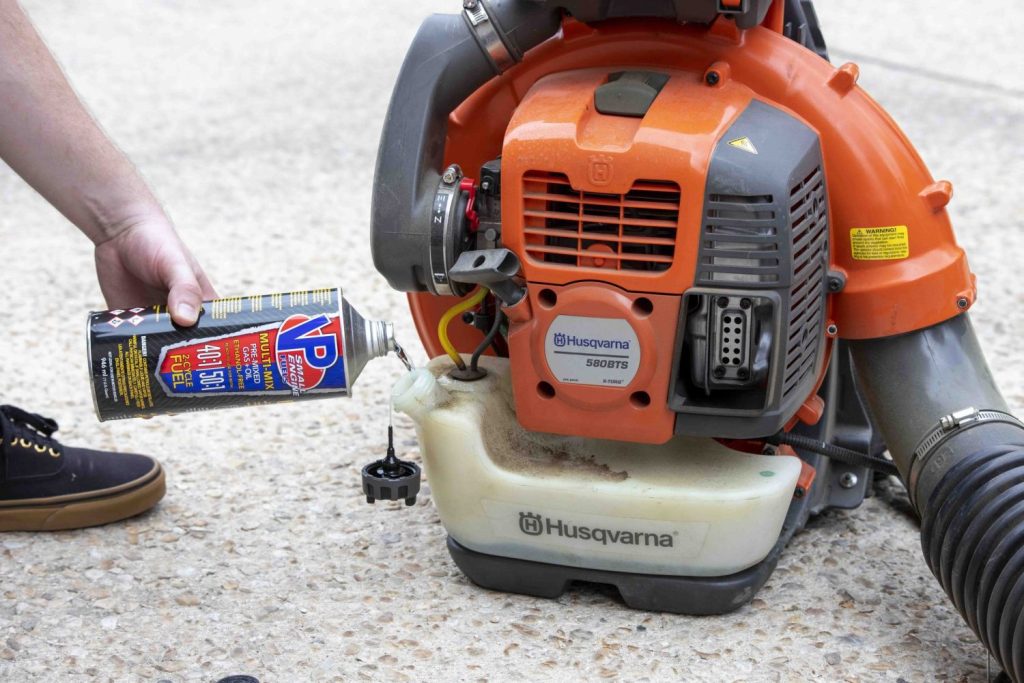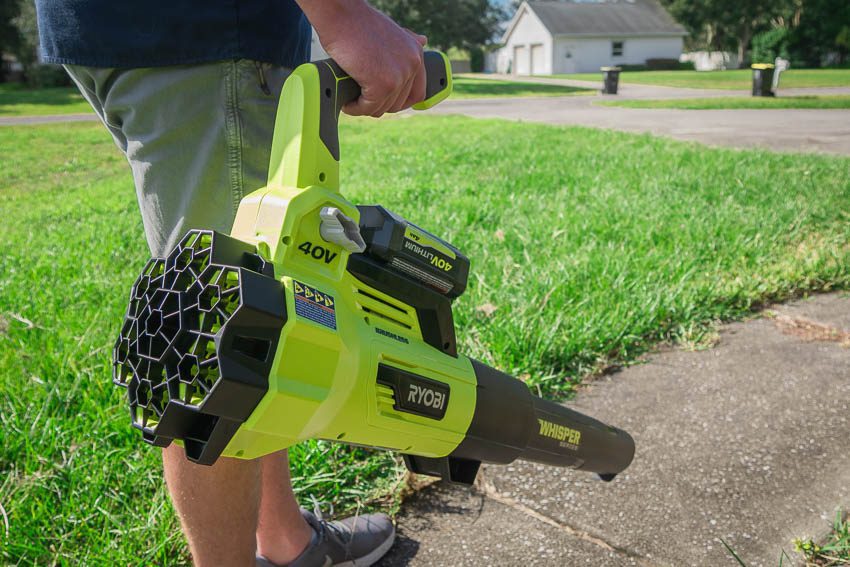When deciding which fuel mixture to use for your leaf blower, the choices can often leave you feeling a bit puzzled.
Do you go with the 50 1 or the 40 1? It’s a common question that many leaf blower owners find themselves asking.
In this article, we’ll break down the differences between these two ratios and help you determine which is best suited for your leaf blower needs.
So, grab a seat, relax, and dive into the world of leaf blower fuel ratios together.
What is the 50:1 and 40:1 mixture ratio?
Definition of 50:1 mixture ratio
The 50:1 mixture ratio refers to fuel to oil used in a two-stroke engine. Specifically, it indicates that for every 50 parts of gasoline, you should mix in 1 part of two-stroke oil. This ratio is commonly recommended for newer two-stroke engines.
Definition of 40:1 mixture ratio
On the other hand, the 40:1 mixture ratio means that for every 40 parts of gasoline, you should mix in 1 part of two-stroke oil. This ratio is typically used for older two-stroke engines or specific models that require a slightly richer oil mixture.
Explanation of how mixture ratio works
The mixture ratio is crucial for the proper functioning of a two-stroke engine. Unlike four-stroke engines with a separate oil reservoir, two-stroke engines require the oil to be mixed directly with the fuel. This oil-fuel mixture serves as both the lubricant and the coolant for the engine.
The oil can adequately lubricate the engine components using the correct mixture ratio, reducing friction and preventing premature wear. Additionally, the oil helps to cool down the engine, dissipating heat and preventing overheating.
The proper mixture ratio ensures the engine receives adequate lubrication and cooling, maximizing its performance and lifespan. Understanding the difference between the 50:1 and 40:1 ratios is essential to deciding which ratio to use for your leaf blower.
Factors to consider when choosing a mixture ratio
Manufacturer’s recommendation
First and foremost, it is crucial to consult the manufacturer’s recommendations for your particular leaf blower. The manufacturer will provide specific guidelines on the recommended mixture ratio for optimal performance and engine longevity. Following their guidelines helps you use the correct ratio for your leaf blower model.
Leaf blower specifications
The specifications of your leaf blower can also influence the choice of mixture ratio. Different models may have varying engine tolerances and requirements, affecting the ideal ratio. It is essential to consider your leaf blower’s specific design and engineering to determine the most appropriate ratio.
Fuel availability
Another consideration when choosing the mixture ratio is the availability of the fuel and oil. Some areas may have limited access to certain types of oil, making it more practical to use a more commonly available oil-to-gas ratio. Considering the convenience and ease of obtaining the necessary fuel and oil for your leaf blower is essential.
Environmental impact
Lastly, it is essential to consider the environmental impact of the mixture ratio you choose. The combustion process in two-stroke engines can produce pollutants, such as particulate matter and hydrocarbons. The recommended mixture ratio can help minimize emissions and reduce your environmental footprint. Choosing a higher ratio does not necessarily result in better performance and may contribute to higher emissions.
Advantages of using a 50:1 mixture ratio
Improved fuel economy
Using the 50:1 mixture ratio can result in improved fuel economy. With less oil being used in the fuel mixture, there is more room for gasoline, the primary energy source in the combustion process. This allows the engine to extract more energy from the fuel, leading to better fuel efficiency and longer running times.
Reduced smoke and emissions
Compared to richer ratios, the 50:1 mixture ratio typically results in reduced smoke and emissions. Since less oil is burned, less smoke is produced during combustion. This can be beneficial for your comfort and the environment, as it reduces air pollution.
Decreased carbon buildup
Using the 50:1 mixture ratio can help decrease carbon buildup in the engine. Richer oil mixtures tend to produce more carbon deposits, which can accumulate over time and affect the engine’s performance. Using a leaner mixture leaves less oil residue behind, resulting in cleaner engine internals and improved longevity.
The convenience of using the same fuel for multiple devices
One of the advantages of using the 50:1 mixture ratio is the convenience of using the same fuel for multiple devices. If you have other two-stroke powered equipment, such as a chainsaw or a trimmer, using the same 50:1 fuel mixture simplifies fueling your equipment. You only need to mix one fuel type, making it more efficient and practical.
Advantages of using a 40:1 mixture ratio
Better lubrication for older engines
The 40:1 mixture ratio provides slightly richer lubrication for older engines. As engines age, they may develop wear and require additional lubrication to compensate for potential leaks or reduced efficiency. The slightly richer mixture can help provide better lubrication for these engines, ensuring their continued operation and minimizing potential damage.
Potential for increased power output
In some instances, using a 40:1 mixture ratio may result in a slight increase in power output. The richer oil mixture can provide additional lubrication to critical engine components, allowing them to operate smoothly with reduced friction. This can lead to a minor boost in performance, especially for engines designed to operate with a richer oil-fuel mixture.
Suitable for specific models or brands
Some leaf blowers or specific brands may recommend or require a 40:1 mixture ratio. Following the manufacturer’s recommendations is essential to ensure proper engine operation and warranty compliance. If your leaf blower explicitly specifies a 40:1 mixture ratio, adhering to these guidelines for optimal performance is essential.
Potential issues with using the wrong mixture ratio
Engine damage
Using the wrong mixture ratio, whether too lean or too rich, can potentially cause damage to the engine. A lean mixture with insufficient oil can result in inadequate lubrication, leading to increased friction and heat generation. This can cause excessive wear, premature component failure, and even engine seizure. Conversely, a rich mixture with too much oil can lead to carbon buildup, fouled spark plugs, and poor combustion.
Reduced performance
Using an incorrect mixture ratio can also lead to reduced performance. A lean mixture may cause the engine to run too hot, decreasing power output and overall performance. On the other hand, a rich mixture can lead to fouled spark plugs, decreased fuel efficiency, and sluggish operation. It is crucial to use the proper mixture ratio to maintain optimal performance.
Increased maintenance requirements
Using the wrong mixture ratio can potentially increase maintenance requirements for your leaf blower. A lean mixture may require frequent spark plug replacements due to increased wear and fouling. A rich mixture, on the other hand, can lead to more frequent carbon buildup, requiring additional cleaning and maintenance. By using the correct mixture ratio, you can minimize maintenance needs and ensure the longevity of your leaf blower.
Understanding your leaf blower’s requirements
Consulting the user manual
To understand your leaf blower’s specific mixture ratio requirements, it is essential to consult the user manual or owner’s guide. The manufacturer will provide detailed instructions on the recommended mixture ratio tailored to your leaf blower model. This information is crucial for proper operation and maintenance of your equipment.
Checking the manufacturer’s website or support
If you no longer have access to the user manual or need additional clarification, you can check the manufacturer’s website for information on the recommended mixture ratio. Many manufacturers provide online resources, FAQs, and customer support to assist with any product questions or concerns. These resources ensure you use the correct mixture ratio for your leaf blower.
Using the recommended oil-to-gas ratio
Generally, it is always best to use the recommended oil-to-gas ratio specified by the manufacturer. This ensures you provide the proper lubrication and cooling for your leaf blower’s engine. Using the correct ratio will help maximize performance, prevent damage, and extend the lifespan of your leaf blower.
Is it possible to switch mixture ratios?
Compatibility of different ratios
Switching between different mixture ratios is generally possible; however, it is essential to assess the compatibility of the ratios and your specific leaf blower. While some engines may be more forgiving and handle different ratios, others may have specific requirements. It is crucial to consult the manufacturer’s recommendations and guidelines when considering a switch in mixture ratios.
Consequences of switching ratios
Switching between mixture ratios can affect the engine’s performance and longevity. Moving from a leaner ratio, such as 50:1, to a richer ratio, like 40:1, may increase oil buildup and carbon deposits. Conversely, switching from a richer ratio to a leaner one may increase the risk of engine damage due to insufficient lubrication. It is essential to understand the potential consequences before changing the mixture ratio.
Debunking common myths about mixture ratios
More oil means better engine protection.
Contrary to popular belief, a higher oil-to-gas ratio does not necessarily offer better engine protection. While oil provides essential lubrication and cooling, excessive amounts can lead to fouled spark plugs, carbon buildup, and decreased engine performance. Following the manufacturer’s guidelines and using the recommended mixture ratio for optimal engine protection is crucial.
Mixing ratios can be adjusted freely.
Mixing ratios should not be adjusted freely without considering the specific requirements of your leaf blower. The manufacturer’s recommendations are based on extensive testing and research to provide your equipment’s best performance and longevity. Deviating from these guidelines without proper knowledge and understanding can lead to engine damage and reduced performance.
Using a higher ratio constantly improves performance.
Using a higher mixture ratio does not always result in improved performance. While a richer mixture may provide better lubrication under certain conditions, there is typically an optimal ratio recommended by the manufacturer. Deviating from this ratio can lead to reduced power output, increased fuel consumption, and higher emissions.
Steps for mixing fuel and oil
Gathering the required materials
To properly mix fuel and oil, you will need the following materials:
- The manufacturer recommends two-stroke oil.
- A clean and approved gasoline container.
- A measuring cup or container for accurate measurements.
- Fuel that meets the recommended octane rating for your leaf blower.
Measuring the correct amounts
Referencing the manufacturer’s guidelines, measure your leaf blower’s correct fuel-to-oil ratio. Use the measuring cup or container to ensure accurate measurements. Pour the required amount of oil into the gasoline container.
Mixing the fuel and oil thoroughly
Once the oil is added to the container, carefully pour the appropriate amount of gasoline into the same container. Make sure the container is clean and free of contaminants. Secure the lid tightly and shake it vigorously to mix the fuel and oil thoroughly. This ensures a homogenous mixture that adequately lubricates and cools your leaf blower’s engine.
Storing the mixture properly
After mixing the fuel and oil, it is essential to store the mixture properly. Use a dedicated and approved gasoline container that is tightly sealed. Store the container in a cool, dry place away from direct sunlight or potential ignition sources. Proper storage helps maintain the quality and performance of the fuel mixture.
Conclusion
Choosing the correct mixture ratio for your leaf blower is crucial for optimal performance, longevity, and environmental impact. While the 50:1 ratio offers improved fuel economy, reduced emissions, and convenience, the 40:1 ratio provides better lubrication for older engines and potential power enhancements.
Understanding your leaf blower’s requirements, following manufacturer recommendations, and correctly mixing and storing the fuel and oil are essential steps for maintaining its performance and longevity. By debunking common myths and considering the factors outlined in this article, you can decide on the correct mixture ratio for your leaf blower and enjoy its benefits.








































